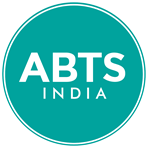The Hottest Products to Import From India in 2024
Below are the hottest Indian imports from India, with large growth potential:
- Regional Handicrafts ($3.6 billion in 2023)
- Jewelry and Precious Stones ($37 billion in 2023)
- Organic Supplements and Medicines ($628 million in 2023)
- Leather Products ($5.7 billion in 2023, potential to double by 2026)
- Homeopathy Medicines (Projected $1.08 billion)
- Ceramics ($2.73 billion in 2023)
You do not need an import licence to import any of these products and clear UK customs.
India’s Exports Have Never Been Better Than In 2023
India’s export performance has never been better with merchandise exports registering their highest ever annual exports of $447.46 billion with 6.03% growth during FY 2022-23 surpassing the previous year (FY 2021-22) record exports of USD 422.00 billion.
“Despite the global headwinds, we have surpassed our 2022-23 target of $750 billion dollars to hit $770.18 billion, which is $94 billion higher than last year’s record exports,” Commerce Secretary Sunil Barthwal said (using services exports estimates combined with the actual numbers for goods exports.)
The Department of Commerce has set a gems and jewellery exports target of $45.7 billion for 2022-23.
India’s gems and jewellery exports account for roughly 3.5% of the world’s total exports, making it the 7th highest exporter in the globe.
New Free Trade Agreements UK and EU
India has begun discussions for a possible Free Trade Agreement with the UK, which is seeking to overcome the handicap it could suffer in the post-Brexit phase by rapidly forging close trade links with partner countries. Since it left the European Union less than two years back, the UK has already formalised 40 FTAs with its trade partners. It is showing similar urgency to formalise an FTA with India and therefore, we could well see heightened engagement between the two countries for closer trade relations.
Once an agreement is reached it will be simple for goods to clear customs.
FTA negotiations with the UK, European Union, Australia, Canada and Israel are ongoing but we will see what 2023 brings but the future looks good for India.
If you’re looking for some ideas to import from India and sell here’s our 6 hottest ideas for 2023:
Import Regional Traditional Handicrafts From India
India is known as the largest exporter of traditional handicraft items among all other developing countries.
During 2023, the total exports of Indian handicrafts were valued at US$ 3.6 billion. Over the past three years, the export of handmade goods, especially carpets, has grown steadily.
The most popular handicrafts are:
- Indian Home Decoratives
- Handmade Sarees, other hand made products
- Furniture, home textiles, and homeware
The top 10 export destinations are the US, the UK, the UAE, Germany, France, Latin American countries (LAC), Italy, the Netherlands, Canada and Australia.
Jewelry and Precious Stones Are Big Business
In 2023, India exported $37 billion in jewelry globally. Up from 26 billion in 2021, a more than 50% increase.
The Government of India is aiming for $70 billion in jewellery exports in the next five years.
India’s gem and jewellery export performance through 2023 has been far ahead of our expectations this time last year. The world’s biggest jewellery consuming nation, the USA, is the largest importer of Indian jewellery with the 2021-22 imports valued at $14.5 billion growing from $ 8.7 billion of exports in 2020-21.
Hong Kong and UAE are among the largest export destinations for India at US$ 9.3 billion and US$ 5.7 billion in exports contributing about 23.7% and 14.5% of the total exports during 2021-22 respectively.
Organic Supplements and Medicines a Growing Market
The export value of ayurvedic and herbal products amounted to about $628 million in 2023, up from $612 million from India in fiscal year 2022. There was a consistent increase in the value of these exports from fiscal year 2015 till 2019.
Organic products include original harvested honey, fruit juices, herbs, and Ayurveda products. In large demand throughout the world and western countries specifically, due to the rise of yoga and Ayurveda. Sold at high prices abroad you can have make a healthy profit from exporting these products.
The growing interest in a healthy lifestyle, natural food supplements and alternative medicines affects the demand for natural ingredients in Europe. This creates opportunities for exporters from developing countries.
Leather Products Are Always In Demand
India is the 5th largest exporter of leather goods and accessories in the world. In 2023, the total leather exports amounted to about 5.7 billion dollars.
Exports of leather, footwear and leather products touched $3.67 billion during 2020-21 (April to Feb).
India is the 2nd largest producer and consumer of footwear in the world, which accounts for accounts for around 13% of the world’s leather production.
During the first pandemic wave in 2020-2021, India exported 1.49 billion USD worth of footwear alone. The figures jumped significantly to 2.05 billion USD in the financial year 2021-2022.
There is still a vast global market that India can tap into. The size of the global leather goods industry is projected to increase to US$306.1 billion by 2027 from an estimated US$241.3 billion in 2020, growing at an annualised pace of 3.5%.
Import Homeopathy Medicines
Homeopathy, or Homeopathic Medicine, is the practice of medicine that embraces a holistic, natural approach to the treatment of the sick without using any organic chemicals.
The Homeopathic market in India is likely to grow 20-25% annually and resize itself to $1.08 billion.
There are 59 countries and territories, which actively import Homeopathic Medicines from India. The combined value of total export is $1.41 million suggesting that this market is in its infancy in India.
Traditional Ceramics
Ceramics are traded all around the world. The data provided on the export analysis shows that there are almost 195 countries and territories, which actively import Ceramic from India. India is known to create some of the finest ceramics in the world and are in high demand and can be very profitable products to import to other countries.
In fiscal year 2023, the export value of ceramic and glassware products from India amounted to over 225 billion Indian rupees ($2.73 billion). A sudden steep rise in the export value was noted from the previous year.
How To Successfully Import From India
The 4 Steps To Success
If you’re now thinking to get involved in the import export world and importing any of these products into your own country, I highly recommend it! Below is a personal testimonial of my experience, working 35+ years in import export. I’ve met some many great people, enjoyed my travels around the world and the satisfaction of negotiating deals and moving products around the world has been fantastic.
If the ideas above have inspired you, I recommend you take the next three steps.
Step 1: Know How To Source Your Products
Once you’ve decided on some products, you’ll have to source where to buy them. Finding sellers of your products is also half the fun. If you’re in a position to travel and explore, do it! It’s a great opportunity to expand your horizons. Not so easy in these times of a global pandemic but eventually we’ll be able to travel again.
If you can’t travel, there’s always Google, AliBaba and AliExpress. This can be a great place to start. For more ideas and an much more in-depth look into sourcing products, check out our blog in sourcing products internationally.
Another advantage to these products is they’re small enough to get product samples easily, either by travelling to India and bringing them to other countries or by buying online and having the goods shipped.
Once you’ve found your new supplier, you’re going to need an EORI number for products to clear UK customs and a freight forwarder so make sure you know how to set this up.
Step 2: Know How To Finding Buyers
Perhaps the biggest question is inevitably, how do I find buyers for my products?
This is without doubt the most common question that I’m asked. Well, the good news is, there’s more than one way to do this. The bad news is, there’s no “easy” way. It’s all going to take some hard work and perseverance but it can most certainly be done and some good profits are no doubt waiting for you.
For my biggest hints and tips after a lifetime in commercial buying and selling check out our blog post on finding buyers.
Step 3: Make Sure You Understand the Basics
You’re going to need to understand at a minimum, the basics of import and export. Don’t jump in and start buying products, hoping to sell them by crossing your fingers. You’ll lose money, time and cause yourself a lot of stress.
To start, have a read of our blog post, How To Start an Import Export Business. It’s only the bare minimum but it will give you an idea of what you need to start thinking about and you’ll pick up some handy tips that I learned over the year.
Step 4: Import Export Training Courses Online
If you’re still sold on the idea of trading internationally, I can only advise you to educate yourself. It’s going to save you a lot of pain! Our online import export courses are taught with a series of pre-recorded videos so you can start any time, study at your own pace and there’s no deadline to complete.
Our courses teach you the practical knowledge you’ll need to know to trade successfully, confidently whilst maximising your profits. Taught by Alan Bracken, with 35+ years of commercial experience in logistics, he skips all the theory you’ll never need to know but teaches you the practical side of how to move your goods around the world.
We were voted Best Trade Education Provider in 2017 by Trade Finance Global and our course has been validated by the London Institute of Shipping and Transport.
Check out our reviews on TrustPilot to see just how our courses have benefited our students.


